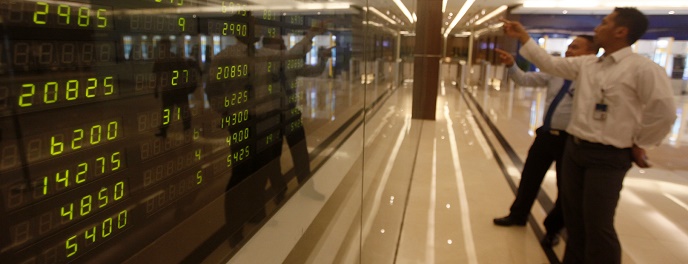Indonesia Stock Market & Rupiah Update: US Payrolls & Rate Hike Expectations Surge
Indonesian assets weakened on Friday (06/11) on expectation that US non-farm payrolls and US employment data would improve, suggesting that a Fed Fund Rate hike may occur in December 2015. Such expectations were correct. After Indonesian and other Asian markets had closed on Friday, the US Labor Department announced that October payrolls rose 271,000 (the largest increase this year), while the US unemployment rate touched a seven-year low at 5 percent. Furthermore, the average hourly earnings over the past 12 months climbed by the most since 2009.
These are rather spectacular data indeed and could be the start of another round of capital outflows from emerging economies, including Indonesia, next week. After having experienced the weakest third quarter since 2009 (due to looming higher US interest rates and turmoil in China), Asian indices and currencies had recovered sharply in October on expectation that the US Federal Reserve had too little scope to raise interest rates this year. However, after seeing a surge in payrolls, sentiments are shifting again.
The 271,000 gain in October payrolls is remarkable as markets were expecting a 181,000 gain, while the US unemployment rate at 5 percent was better than markets' 5.1 percent estimate.

Although official US jobs data had not been released yet, Indonesia's benchmark Jakarta Composite Index was already in red territory on Friday due to expectation of improving US labour market conditions. And these external sentiments managed to neutralize the positive domestic sentiments. After Indonesia's inflation eased to 6.25 percent (y/y) in October, more and more voices were heard that Indonesia's central bank (Bank Indonesia) may soon cut its relatively high interest rate environment (the benchmark BI rate is currently at 7.50 percent), hence paving the way for accelerated economic growth.
Meanwhile, the Indonesian government unveiled its sixth economic stimulus package, which involves generous tax incentives for investment in the country's special economic zones.
Also, investors were content with Indonesia's third quarter GDP growth result (+4.73 percent y/y). Although GDP growth was slightly below the consensus forecasts (at roughly 4.8 percent y/y), most investors seemed relieved to see an acceleration from the 4.67 percent growth pace in the preceding quarter (constituting a six-year low). It is indeed a positive sign that economic growth accelerated from the second to the third quarter as this rarely happens in Indonesia (usually the country's annual GDP growth slows from the second to third quarter).
On Friday, the Jakarta Composite Index fell 0.23 percent to 4,566.55 points. Over the past week the index climbed 2.79 percent due to the recent rally. However, the benchmark index is still down 12.63 percent so far this year.
Jakarta Composite Index (IHSG):
Rupiah Exchange Rate
Apart from increasing expectation of a US interest rate hike before the year-end, the rupiah also feels pressure due to Indonesia's falling foreign exchange reserves. On Friday afternoon, Bank Indonesia announced that the country's foreign exchange reserves declined by USD $1 billion to USD $100.7 billion at the end of October 2015 due to foreign debt payments and central bank efforts to stabilize the value of the rupiah.
The Indonesian rupiah depreciated 0.16 percent to IDR 13,564 per US dollar according to the Bloomberg Dollar Index. However, Bank Indonesia's benchmark rupiah rate (Jakarta Interbank Spot Dollar Rate, abbreviated JISDOR) appreciated 0.39 percent to IDR 13,550 per US dollar on Friday (06/11). So far this year, the rupiah has weakened nearly nine percent against the greenback.
Indonesian Rupiah versus US Dollar (JISDOR):
| Source: Bank Indonesia